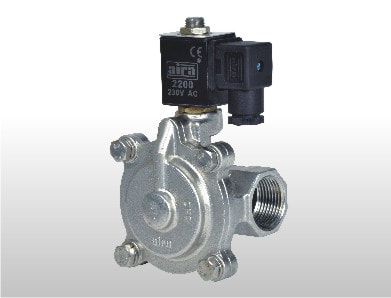|
What is a 1 Inch Solenoid Valve? A 1-inch solenoid valve is a type of valve that is designed to regulate the flow of fluids or gasses through a pipe. It features a solenoid coil that creates a magnetic field when an electrical current is applied, which then opens or closes the valve. The 1-inch size of the valve refers to the diameter of the pipe it is designed to fit into. These valves are commonly used in industrial applications, such as manufacturing plants or water treatment facilities, to control the flow of water, steam, or other fluids. They are also used in the automotive industry to regulate fuel or air flow in engines. The benefits of using a solenoid valve include quick response time, high precision, and reliability. They can be easily automated and integrated into a control system, allowing for remote control and monitoring of the valve's operation. This makes them ideal for use in systems that require frequent or precise adjustments to the flow of fluids or gasses. When selecting a 1-inch solenoid valve, it is important to consider factors such as the type of fluid or gas being controlled, the operating pressure and temperature, and the required flow rate. Proper selection and installation of the valve can ensure efficient and safe operation of the integrated system. Why Are 1 Inch Solenoid Valves Important? 1-inch solenoid valves are crucial components in various industrial and commercial applications requiring precise fluid or gas flow control. These valves provide several advantages over traditional valve types, making them important tools in various fields. One of the primary advantages of 1-inch solenoid valves is their ability to operate quickly and accurately. The solenoid coil creates a magnetic field that causes the valve to open or close instantly in response to an electrical signal. This feature is particularly useful in applications requiring precise fluid flow control, such as chemical processing or water treatment. Another benefit of solenoid valves is their reliability. The electronic components of the valve are protected from the environment, making them less prone to wear and tear. Additionally, the valve is self-contained and requires minimal maintenance, reducing downtime and repair costs. 1-inch solenoid valves are also easy to integrate into control systems, making them ideal for automation. They can be programmed to open or close at specific intervals based on flow rates or other parameters. This feature makes it possible to regulate fluid flow in real time, resulting in greater efficiency and reduced waste. In the automotive industry, 1-inch solenoid valves control engine fuel and airflow. These valves ensure that the engine operates at peak efficiency, which improves fuel economy and reduces emissions. In the medical industry, solenoid valves control the flow of medical gasses and fluids in various medical devices, ensuring the safety and well-being of patients. Overall, 1-inch solenoid valves are important because they offer precise control, reliability, and easy automation. They are versatile tools in various applications, from industrial processing to automotive and medical devices. Proper selection and installation of these valves can help improve system efficiency, reduce waste, and ensure safe and reliable operation. How to Choose the Right 1-Inch Solenoid Valve for Your Application
Choosing the right 1-inch solenoid valve for your application can be a critical decision that affects the performance and efficiency of your system. Here are some factors to consider when selecting a solenoid valve:
The Different Types of 1-Inch Solenoid Valves Several types of 1-inch solenoid valves are available, each designed to meet specific needs and requirements. Here are some of the most common types of 1-inch solenoid valves:
What are the Benefits of Using a 1 Inch Solenoid Valve? A 1 inch solenoid valve offers many benefits, making it a popular choice for various applications. Its compact design makes it easy to install in tight spaces, saving valuable real estate. Additionally, the 1-inch size provides a high flow rate, allowing for efficient and rapid fluid control. The solenoid valve is also highly customizable, with various options for materials, voltage, and pressure ratings, making it suitable for use in diverse environments. Furthermore, solenoid valves are incredibly reliable, requiring minimal maintenance and providing a long service life. They are also highly responsive, allowing for precise control over fluid flow. This accuracy can be essential in applications where precise fluid control is critical, such as in medical equipment or manufacturing processes. Finally, solenoid valves are easy to operate and can be integrated into automation systems, making them ideal for industrial applications. They can be controlled remotely, allowing efficient and safe operation in hazardous environments. Overall, a 1-inch solenoid valve offers numerous advantages, including efficiency, reliability, and flexibility, making it a valuable asset in various applications.
0 Comments
Leave a Reply. |
Categories
All
|


